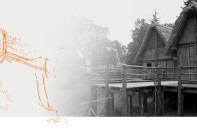-

12 July, 2013
It is difficult to establish when the man began to inhabit the wetlands, but it is clear that water has always constituted an element of charm and attraction. However, only a relatively recent phase, starting from the Neolithic period, these areas have been occupied in a systematic way with the founding of settlements. ...
-

17 June, 2013
The marsh of the sources of Livenza was formed in a structural natural depression , bounded to the east by the Col Longone , to the west by the slopes of Cansiglio and crossed to the north by gravels transported by Gorgazzo river...
-

17 June, 2013
The wetland of Palù di Livenza was formed in a natural depression produced by the surrounding limestone hills that demarcate the boundaries. To limit the extension of the dwelling village and collect geological information many cores have been conducted with similar methodology as applied in wetlands in Switzerland. ...
-

17 June, 2013
June 27, 2011 is an important date for the citizens of the municipalities of Caneva and Polcenigo in the Province of Pordenone. On the occasion of the 35th session of the UNESCO World Heritage Committee, meeting in Paris, Palù di Livenza was inscribed on the UNESCO list of Prehistoric Pile Dwellings around the Alps...
-

17 June, 2013
The Palù di Livenza, also called Palù della Santissima, takes its name from the marshy valley of the source of Livenza, on the south-eastern slopes of Mount Piancavallo. The marshes of the area, between the springs of the river and water meadows in the valley are home to many species of plants and animals...